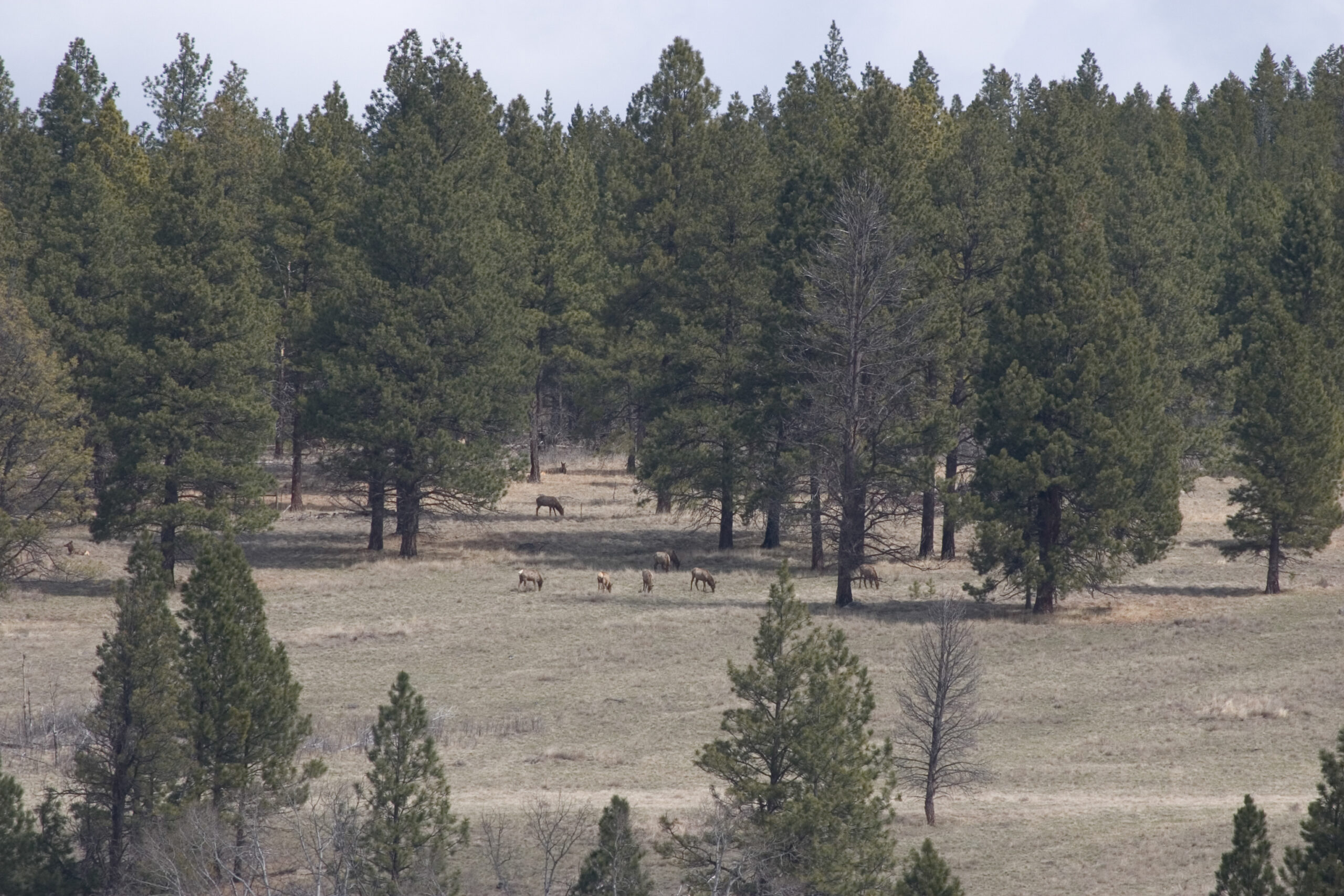Below is a joint op-ed authored by Rocky Mountain Elk Foundation President and CEO Kyle Weaver and Boone & Crockett Club CEO Tony Schoonen.
Our national forests are at a crossroads — and Montana’s are prime examples of the challenges we face.
Years of fire suppression have dramatically changed the composition and structure of the forested landscape. Disturbance was a key part of western ecology and without it, the forests become less resilient. Disease infestations have killed tens of thousands of trees. Conifers have expanded and begun to encroach aspen stands, sagebrush rangelands, and adjacent grasslands.
Unfortunately, with warmer temperatures, drought, and the degraded forest conditions, when fires come now — and they inevitably do — they are catastrophic, having significant long-term effects on vast landscapes and the wildlife that depend on them.
The reality is we need to do something if we want to restore forest health. The USDA Forest Service recognizes this and developed a strategy to confront the wildfire crisis and increase resilience through forest health treatments. They are working closely with local communities, Tribes, and other partners to implement locally led forest management projects that are good for the forest, good for communities, and good for wildlife.
Such was the case with the Beaverhead-Deerlodge National Forest that has worked closely with a working group of stakeholders and the National Forest Foundation to plan forest treatment projects.
The Pintler Face project near Anaconda went through years of discussion and collaborative planning. The partners agreed to the vision of implementing a variety of forest management tools including commercial timber harvest, thinning, removal of encroaching conifers in sagebrush rangelands, prescribed fire, aspen stand regeneration, and grassland and riparian improvements. Just 16% of the 73,624 acres within the project area are slated for treatments. The end result would be healthier sagebrush and grasslands, interspersed with healthier aspen and conifer stands — a mosaic of habitat types with different age classes of vegetation that benefits a wide range of wildlife species.
But like a predictable sitcom, environmental organizations who chose not to participate in the process have filed a suit to stop the Pintler Face project. Their claim is that the Forest Service and the U.S. Fish and Wildlife Service did not adequately consider the impacts to threatened species like lynx and grizzly bears. Perhaps more frustrating is that the groups are also seeking to use the Equal Access to Justice Act to get their litigation costs reimbursed — often for sums well over $100,000.
Yes, our tax dollars will be spent to pay these groups for continuing to be the monkey wrench in beneficial projects that have been through extensive review and collaborative planning.
In fact, the Services did consider lynx, grizzly bears, and other wildlife species in their analysis. The forest treatments were adjusted to ensure adequate hiding cover remains and to avoid areas preferred by snowshoe hares (the lynx’s primary prey). And after the treatments occur, regeneration would actually increase forage and habitat availability.
We should not let a small group of special interests subvert projects that have already gone through extensive review and collaborative planning. The Pintler Face project would be good for wildlife, including — if not in particular — some of the vulnerable species for which the environmental groups claim they are safeguarding.
If we are truly going to confront the wildfire crisis and improve the health of our national forests, we should condemn these legal maneuverings and let our federal land management agencies actually do their jobs.
To learn more about the importance of active forest management to wildlife please visit us online at boone-crockett.org/forest-health or rmef.org/restoring, or in person at our headquarters buildings in Missoula.
